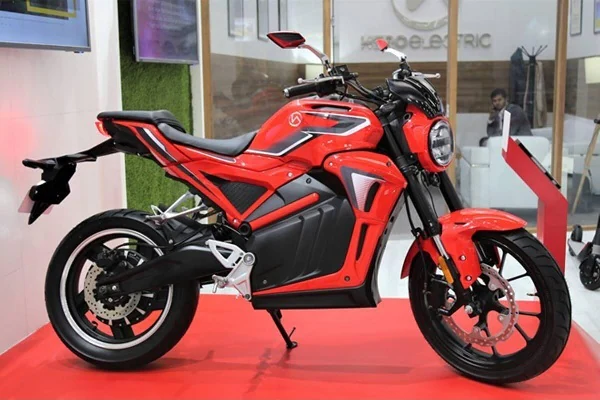Regular bike maintenance is essential to ensure a smooth and safe ride while prolonging the life of your bike. Whether you’re a daily commuter or a weekend cyclist, taking time to care for your bike will save you from costly repairs and keep your riding experience enjoyable. In this guide, we’ll cover the most important aspects of bike maintenance, including cleaning, tire care, brake adjustments, and drivetrain upkeep.
Regular Bike Cleaning
A clean bike not only looks great but also functions better. Dirt, grime, and moisture can accumulate over time, leading to rust, wear, and tear. Regular cleaning helps prevent these issues and keeps your bike running smoothly.
Cleaning Tips:
- Use mild soap and water: Avoid harsh chemicals that could damage your bike’s finish or components.
- Wipe down after wet rides: Moisture can lead to rust, especially on exposed metal parts. Use a soft cloth to wipe your bike dry.
- Chain cleaning: Clean your chain with a brush or a specialized chain cleaner tool. Lubricate it afterward to ensure smooth shifting and reduce wear.
Tire Care: Inflation and Inspections
Maintaining your tires at the correct pressure is crucial for a smooth and efficient ride. Under-inflated tires can increase rolling resistance, making your ride more difficult, while over-inflated tires can cause poor traction and a rough ride.
Tire Maintenance Tips:
- Check tire pressure regularly: Use a tire gauge to ensure your tires are inflated to the manufacturer’s recommended PSI.
- Inspect for damage: Check for cuts, punctures, or worn-out tread that may cause flats or reduce traction.
- Replace tires as needed: If the tread is worn down or if you frequently experience flats, it’s time to invest in new tires.
Brake Adjustments: Safety First
Brakes are one of the most critical components of your bike, and keeping them in optimal condition is vital for your safety. Over time, brake pads wear down, and cables can stretch, reducing braking power.
Brake Maintenance Tips:
- Inspect brake pads: Look for wear indicators on your brake pads. If they’re worn down past the recommended point, replace them.
- Check cable tension: Ensure your brake cables are properly tensioned so your brakes respond quickly.
- Test your brakes: Before each ride, squeeze your brake levers to check responsiveness. If they feel soft or sluggish, an adjustment may be necessary.
Drivetrain Maintenance: Keep Your Gears Running Smoothly
Your bike’s drivetrain—comprising the chain, cassette, and derailleurs—plays a crucial role in shifting and power transfer. Keeping these components in good condition ensures smooth gear changes and a more efficient ride.
Drivetrain Maintenance Tips:
- Lubricate the chain: Apply bike-specific lubricant to your chain regularly, especially after wet or muddy rides. Wipe off any excess to prevent dirt from sticking.
- Adjust derailleurs: If your bike isn’t shifting gears smoothly, your derailleurs may need adjusting. Use your bike’s barrel adjusters to fine-tune shifting performance.
- Replace worn components: If you notice skipping gears or excessive chain wear, it may be time to replace the chain, cassette, or chainrings.
Checking Your Bike’s Bolts and Fasteners
Loose bolts and fasteners can lead to dangerous riding conditions or mechanical failures. Periodically inspecting and tightening these components ensures that your bike stays in one piece during your rides.
Tips for Bolts and Fasteners:
- Use a torque wrench: For sensitive components like the handlebars or seat post, use a torque wrench to avoid overtightening and damaging parts.
- Inspect regularly: Check key bolts, such as those on the stem, handlebars, and seat post, every few rides.
- Don’t overtighten: It’s important to find the right balance. Overtightening can strip threads or crack components.
Suspension Maintenance: For Mountain and Hybrid Bikes
If your bike is equipped with suspension, maintaining these components is essential for performance and comfort. Suspension forks and shocks require periodic servicing to function correctly, particularly after heavy use on rough terrain.
Suspension Care Tips:
- Keep it clean: Wipe down suspension seals after each ride to prevent dirt buildup.
- Check for air pressure: If your bike has air suspension, ensure it’s set to the recommended pressure for your weight and riding style.
- Service intervals: Consult your bike’s manufacturer for recommended suspension servicing intervals, which often require professional servicing.
Saddle and Handlebar Adjustments: Comfort is Key
An improperly positioned saddle or handlebars can lead to discomfort or even injury over time. Adjusting these components to suit your body can significantly improve your comfort and riding efficiency.
Adjustment Tips:
- Saddle height: Ensure your saddle is at the correct height. When sitting on your bike, your leg should be almost fully extended at the bottom of the pedal stroke.
- Handlebar position: Adjust the height and angle of your handlebars to reduce strain on your wrists and shoulders.
- Regular check-ins: As you ride more, you may need to make small adjustments to your saddle and handlebars for optimal comfort.
Conclusion
Bike maintenance is not just about keeping your ride in top condition but also ensuring your safety and comfort. Regular cleaning, tire checks, brake adjustments, and drivetrain care are essential for a smooth, trouble-free cycling experience. By taking the time to maintain your bike properly, you’ll enjoy a better performance, reduce wear on components, and avoid unexpected breakdowns during your rides.


